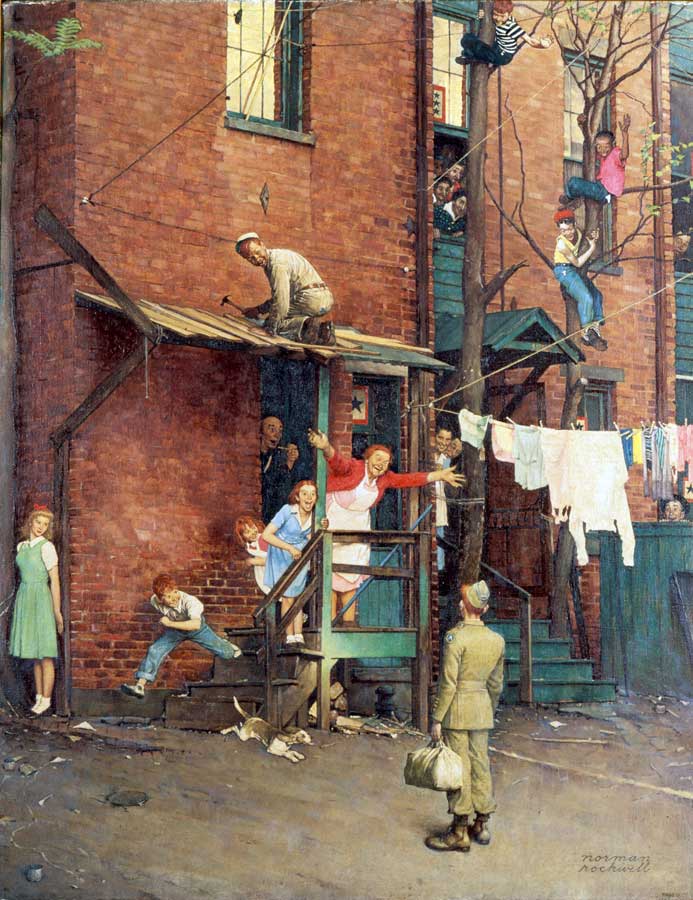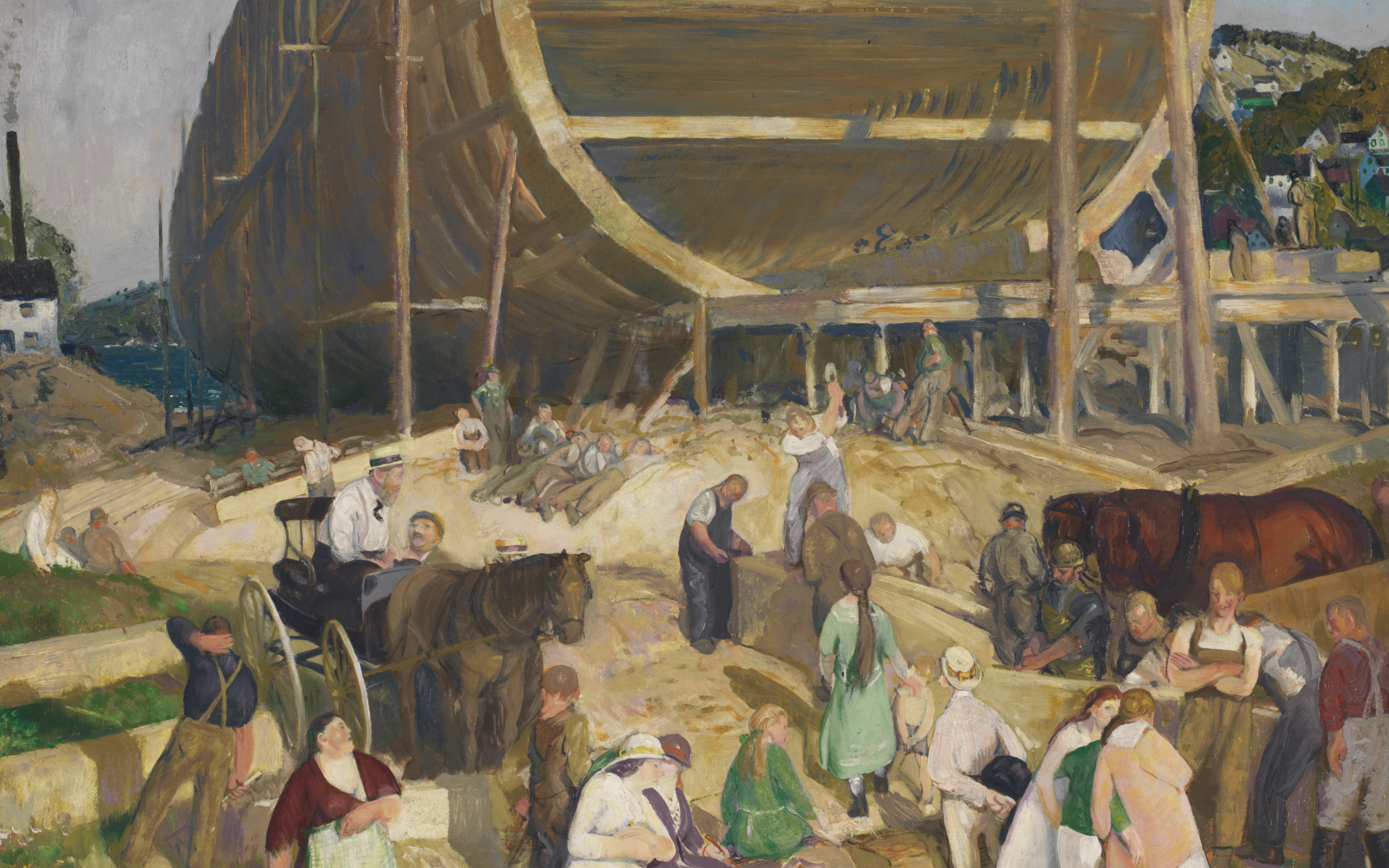Christie’s has announced that The Michael Scharf Family Collection will
lead the American Art sale on May 22. Considered one of the finest collections
of American Modernism, this impressive group of twenty-eight paintings offers a
strong representation from the Stieglitz Circle with works by Georgia O’Keeffe,
Marsden Hartley, and Arthur Dove, as well as exceptional early explorations
into abstraction by artists including Max Weber and Charles Green Shaw.
Michael Scharf began his collection of American Modernism in
1972 when he purchased Arthur Dove’s Parabola and
began to study the artist and his contemporaries. His collecting habits,
however, were founded during his childhood with serial collections of stamps,
porcelain pugs, early editions of Elizabethan plays and British literature, and
early sixteenth-century Hebrew books printed in Constantinople.
Michael Scharf comments, “The more I studied, the more
I came to believe Arthur Dove, Georgia O’Keeffe, Max Weber, Marsden Hartley,
and John Marin were important artists who were responsible for instigating a
transformation in the development of Modern American art. Also, the purchase of
Parabola caused a bee to land in my bonnet. The bee
stung me into activity, and a burning interest developed. Thus the Collection
was born.”
Eric Widing, Deputy Chairman, American Art, Christie’s
remarks, “Over many decades, Michael Scharf assembled an
authoritative collection which represents, in depth, the emergence of modernism
in America. Among its highlights are masterworks by many of the best-known
American artists of the early twentieth century: Arthur Dove, Marsden Hartley,
Georgia O’Keeffe, Max Weber and dozens of others. Some works are among the
earliest American abstractions, others explore nature and still others touch
upon diverse subjects such as the city, music, and mystical and symbolic
imagery. It is a justly celebrated collection.”
.jpg)
Leading the collection is Georgia
O’Keeffe’s Inside Red Canna,
1919, which is arguably the artist’s earliest depiction of a
magnified flower in oil (estimate: $4,000,000-6,000,000). A triumph of American
Modernism, the work is the culmination of a series of a small watercolors
and oil paintings of cannas O’Keeffe created between 1918 and 1919. Of this
group, Inside Red Canna is the
largest in scale and is one of the most compositionally complex paintings
within O’Keeffe’s early oeuvre. The painting was included
in O’Keeffe’s watershed 1923 retrospective exhibition at Anderson Galleries,
organized by her dealer and future husband Alfred Stieglitz, which launched the
artist to her iconic status.
.jpg)
.jpg)
Arthur G. Dove’s River
Bottom, Silver, Ochre, Carmine, Green, circa
1923 (estimate: $3,000,000-5,000,000), is among the most important works by the
artist to come to the market and reflects Dove’s deep connection to the
American landscape and his fascination with water. In this view looking down
onto a riverbed, Dove creates an amorphous exploration of color, line and form,
pushing representation of nature to the edge of abstraction.


Marsden Hartley’s Abstraction
(estimate: $4,000,000-6,000,000) was created in 1912-13 during a pivotal period
of his career in Europe and embodies one of the artist’s most experimental and
boldest abstract statements of his oeuvre. Building
upon his musical ‘intuitive’ works of late 1912, and anticipating the
politically and personally entrenched wartime German Officer paintings, Abstraction veritably
vibrates with the intellectual and spiritual energy of one of the greatest
visionaries of early twentieth-century art.
The collection also features seminal artists of early
abstraction including one of the first shaped canvases ever painted in America
by Charles Green Shaw, Plastic
Polygon, 1937 (estimate: $250,000-350,000). Other collection
highlights include works by Oscar Bluemner, Max Weber and Konrad Cramer, among
others.
The American Art sale on May 22 is comprised of 88 lots and
distinguished by rare and fresh to the market paintings, many with important
provenance. The American Art online auction opens for bidding May 15-22 and
features works from some of the most noteworthy American artists of the 19th
and 20th centuries, from Milton Avery, Edward Hopper,
and Andrew Wyeth to Asher
B. Durand and George Inness,
with estimates starting under $5,000. All lots will be on view in Christie’s
Rockefeller Center galleries from Saturday, May 18-21.

The top lot of the American Art sale is Norman
Rockwell’s famed Saturday Evening Post cover The
Homecoming, which was printed for the May 26, 1945 issue, just
eighteen days after the end of World War II (estimate: $4,500,000–6,500,000).
The timely and emotional image tells the story of a young soldier arriving
home, where family, neighbors and even a love interest rush to greet him with
ecstatic joy. The work was described by Post editor Ben Hibbs as “the finest
cover Norman has done; in fact, I have always felt that it is the greatest
magazine cover ever published.”
Another fine example from the group of American
Illustration in the sale is N.C. Wyeth’s painting
for the novel Deerslayer, titled "She foundChingachgook studying the shores of the lake, the mountains, and the heavens..." (estimate: $700,000-1,000,000).

Among the strong selection of American Modernist works is Shipyard
Society by George Bellows (estimate:
$4,000,000-6,000,000), which is offered by the
Virginia Museum of Fine Arts to support future acquisitions. Painted in
Camden, Maine, in 1916, Shipyard Society shows two of the
most famed themes of Bellows’ career; the struggle of man versus the sea along
the coast of Maine, and a focus on a realistic depiction of all levels of
society.
.jpg)
.jpg)
Additional American Modernist highlights include Edward
Hopper’s Windy Day which is sold to benefit
The Prospect Hill Foundation and depicts the White River in Vermont with the
adept handling of watercolor and keen understanding of light for which the
artist’s works on paper are best known (estimate: $1,000,000-1,500,000).
The auction includes iconic Impressionist works, including a
Cos Cob interior by Childe Hassam recognized by
scholars as the best of its type, a pastel
example of William Merritt Chase’s famed Shinnecock,
Long Island, landscapes, and a John Singer Sargent
sketch after the artist’s masterwork El Jaleo in the
Isabella Stewart Gardiner Museum.
Stellar examples by the Hudson River School
include works by Sanford Gifford, John Frederick Kensett
and Albert Bierstadt. A strong
group of Western works includes examples by Alfred
Jacob Miller, Henry Farny and Taos Society artists such as Walter
Ufer. The sculpture selection is led by an Augustus
Saint-Gaudens once owned by Stanford White, as well as exceptional
models by Gaston Lachaise, Elizabeth Catlett and
Herbert Haseltine.